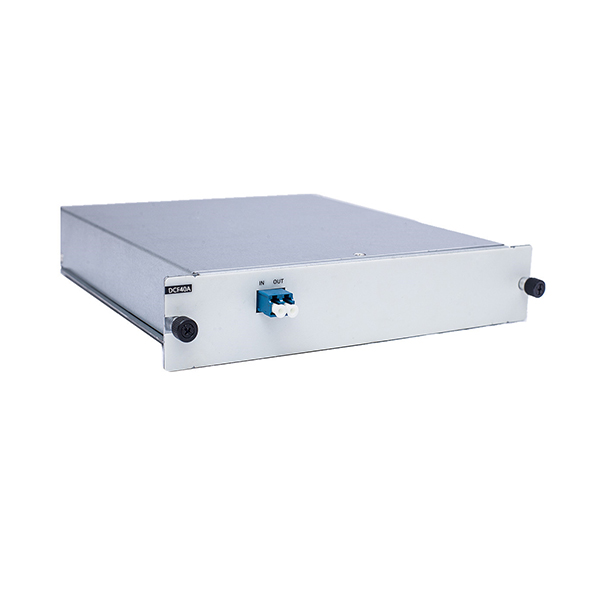
In optical fiber communications, dispersion compensation modules (DCM) (also called dispersion compensation units, DCU) can be used for compensating the chromatic dispersion of, e.g., a long span of transmission fiber.
Typically, such a module provides a fixed amount of dispersion (e.g. normal dispersion in the 1.6-μm spectral region), although tunable dispersion modules are also available.
A module can easily be inserted into a fiber-optic link because it has fiber connectors for the input and output. The insertion losses may be compensated with a fiber amplifier, e.g. an erbium-doped fiber amplifier in a 1.5-μm telecom system. A dispersion-compensating module is often placed between two fiber amplifiers.
Dispersion is a key transmission property of optical fiber. After transmission through DCM fiber over a certain distance, the optical pulse signal broadens in time, causing inter-symbol interference, increasing the error rate, and degrading communication quality.
The higher the data rate is, the more easily the inter-symbol interference will present.
The longer the transmission distance is, the more easily the inter-symbol interference will present.

100% slope compensation of G.652 fiber in C-band ( Typical )
Low insertion loss
Low polarization mode dispersion
Wideband dispersion compensation
Compensation up to 40 km
Completely passive—no powering utilized
Telcordia GR-2854-CORE, ROHS compliant
Product Model | DCF40A |
Equivalent G.652 compensation length | 40km |
1545nm wavelength dispersion(ps/nm) | -670±30 |
1545nm wavelength relative dispersion slope | 0.004±20%(nm-1) |
Insertion loss | ≤4.8 dB |
Polarization mode dispersion | ≤0.9 ps |
Nominal single-wave input optical power | ≤0 dBm |
Optical interface | All interfaces are LC type |
Typical power consumption | 0W (passive components) |
MTBF | > 200000 hours |
Occupied slot number | 2 slots (dispersion compensation board over 40km need to be configured individually with the DCF passive frame) |

